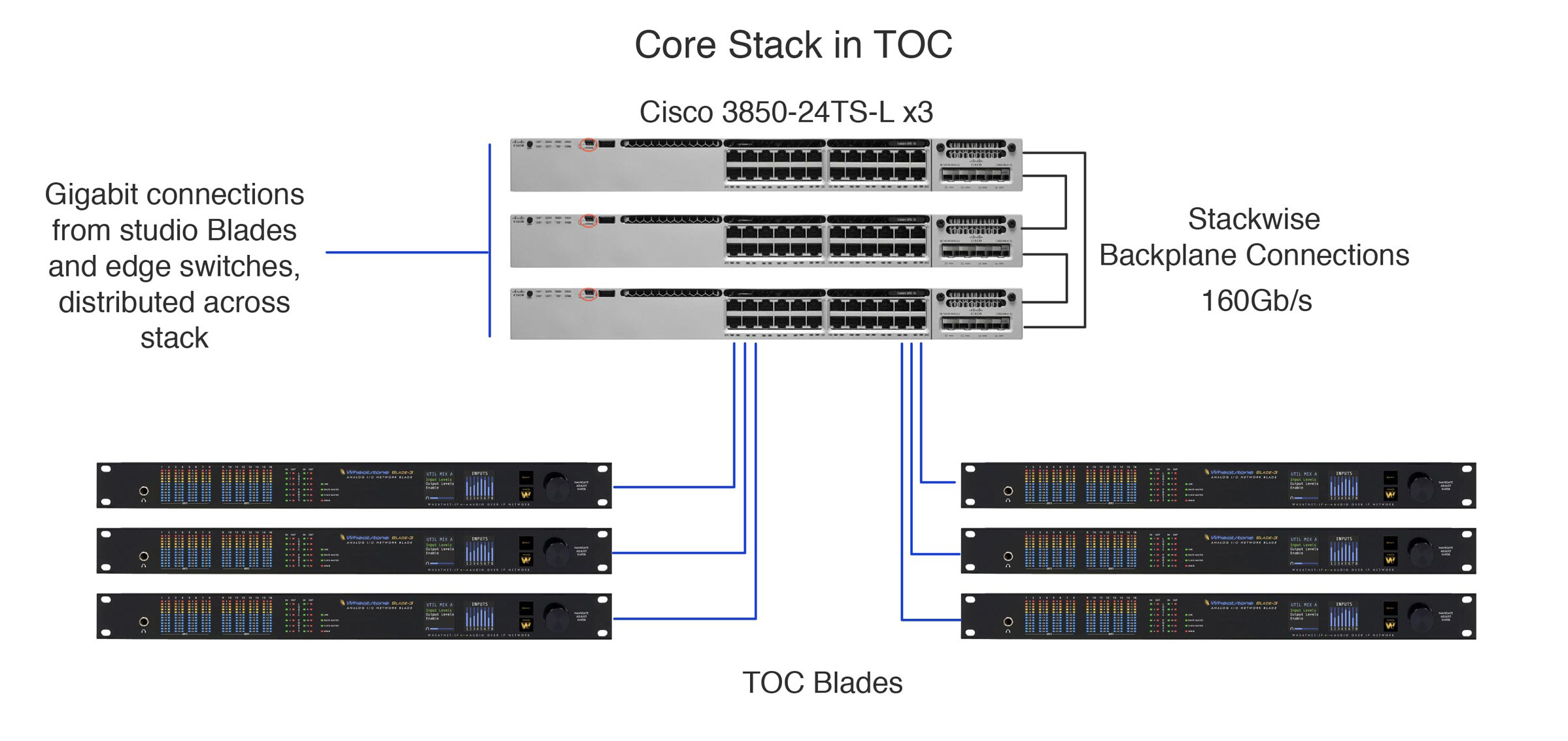Best Switch Topology for AoIP Redundancy
Wheatstone's Phil Owens details why you should set up a central core stack of switches

If you’re new to AoIP topologies, you have probably heard it’s best to set up a central core stack of switches in the TOC with edge switches at each studio or group of studios. There are two good reasons to do this:
1. Should a studio lose connectivity with the central stack for any reason—fire in the TOC, flood, power outage—individual studios can continue to operate independently via their local switches.
Cisco has a topology called Stackwise, where the back planes of multiple switches in a TOC, for example, can be joined at very high bandwidth (somewhere on the order of 160 gigabits-per-second links) in a daisy chain configuration, as shown above. If any one of the switches should drop out of the stack, the other stack members can still communicate with each other.
2. All local I/O is handled by the edge switches, which provides a more efficient networking and traffic control by cutting down the number of “home runs” from the studio to the central core stack.
Shown above are smaller, 12-port edge switches that handle the local I/O for the studio and have a trunk connection back to the central stack. For additional redundancy, you can take a baseband connection out of one of the local I/O nodes (or BLADEs, in the case of Wheatstone) in the studio and run it into the rack room. This gives you a baseband audio connection directly from the studio to the TOC in case you need to quickly patch programming into the RF chain.
As a sales engineer for Wheatstone, Phil Owens has a working knowledge of AoIP topologies and best practices for designing an effective IP audio networked studio.
The professional video industry's #1 source for news, trends and product and tech information. Sign up below.


